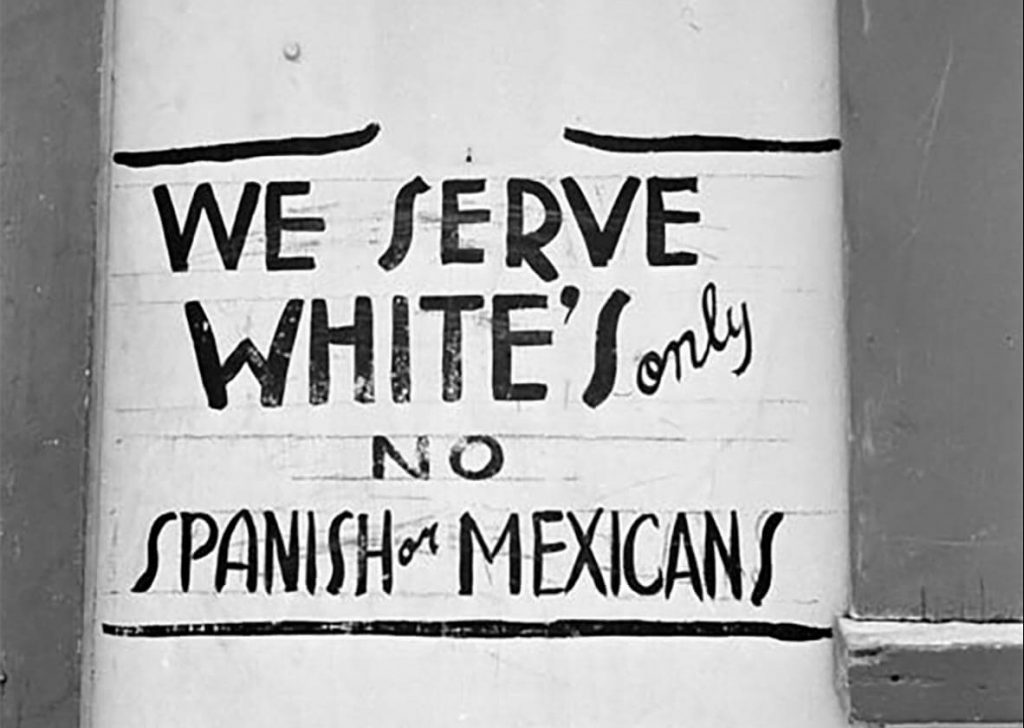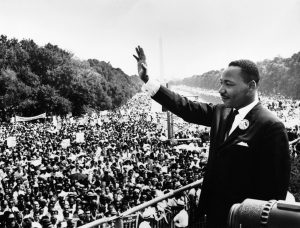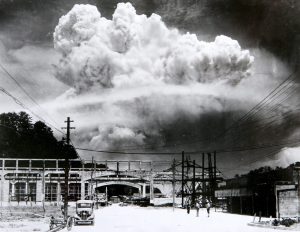1911, Antonio Gomez, a fourteen-year-old Mexican-American boy, was walking home carving pieces of wooden shingles, when suddenly a saloon owner shoved him to the street. Gomez was scolded by the saloon owner for littering on the sidewalk shouting, “the sidewalk is no wastebasket.” A group of men that was at the saloon cheered on the owner and cursed at Gomez. As the boy gathered his shingles and tried to leave, a man by the name of Charles Zieschang snatched the wooden shingles from the boy’s hand and told the owner he could, “make the damn little skunk quit whittling.” Zieschang whipped Antonio Gomez with his own wooden shingles while other men watched and ridiculed the boy. Out of self-defense Antonio Gomez stabbed Zieschang with the pocket knife he was using to carve the wooden shingles. Zieschang died from blood loss in twenty minutes.1

Mexican-Americans were somewhat immune to the racist Jim Crow policies of the south that made discrimination against black Americans legal. This was due to the fact that Mexicans were “white by law” since the signing of the Treaty of Guadalupe Hidalgo in 1848. So, the Juan Crow laws emerged as a way to legally discriminate against Mexican Americans. Through Juan Crow prejudices, Texas passed English-only laws that led to future segregation of Mexican-Americans in school systems. Anglos pushed for segregation of Mexican-Americans in school because they believed having their children learn alongside Mexican-American children would hinder them. Segregationists also believed that it was safer for their white children because they believed Mexican-Americans reached puberty earlier. Unsurprisingly the anti-Mexican efforts were blind-sided by authorities across the state giving more power to Juan crow laws that essentially justified discrimination and mistreatment of Mexican-Americans.2

Antonio Gomez was taken into custody almost immediately by constable McCoy and taken into the town jail of Thorndale, Texas. Soon after his arrest, another version of the altercation went around. Some were claiming that Gomez was the attacker who waited for Zieschang to come out of the saloon after having snatched his wooden shingle and peacefully retreating to the saloon. The people were so eager to bring their own “justice” that they were willing to act as witnesses without having seen anything. Although history has yet to prove which story is the most accurate, the only part that remains constant is the events that led up to his death. Gomez became an instant target for lynching because the citizens knew he was too young for capital punishment in the state of Texas, but they were willing to take matters into their own hands. It was reported that a mob of more than a hundred people waited for justice outside the jail. Constable McCoy who placed Gomez in jail tried to transfer him to another jail out of fear that the boy would be lynched by the people. The constable knew that the small jail could keep Antonio Gomez in, but he wasn’t sure that it could keep an angry mob out. Gomez was led through the back of the jail with a chain around his neck and straight to a house. McCoy went to look for reliable transportation to another jail while Gomez was kept in a safe place, or so he thought. Somehow the angry mob learned the location of Antonio Gomez and managed to steal him from authorities.3
Racism had grown its roots very deep and brutally here in the state of Texas. Racism in Texas stems back not only to slavery and the prejudice towards black people, but to native Americans as well. Mexicans were sometimes saved by the law which would recognize a Mexican person as “white” as long as their skin permitted it. If you were not of fair skin, then you risked being persecuted. Most Anglo-Americans had an “us versus them” mentality when it came to Mexican-Americans. This was because many Anglo-Americans picked up on American nationalism and nativism going against Mexican-Americans who were wrongly stereotyped. Mexican-Americans were usually seen as inferior, violent, and even anti-American. Racism against Mexican-Americans was like a double-edged sword. Mexican-Americans had to deal with Anglo-Americans who did not accept them and did not think they were American enough. Simultaneously, Mexican-Americans dealt with Mexicans who also thought less of Mexican-Americans, often times looking at them as traitors. Racism in the state of Texas was not only on the mere surface, but it had also been implemented systematically, from the school systems to the housing system and even the labor systems. This is because our country’s story is based on a consensus history, which means that our history is based on points of view that seeks to paint an exciting picture of our history, and downplaying the tragedies that occurred.4

Antonio Gomez was captured by an angry mob and was dragged by a horseman who managed to grab the chain that was around Gomez’s neck. Antonio Gomez’s body was found lifeless hanging from a telegraph pole next to a ladder. Only three hours had passed since the death of the man that Gomez was charged for “murdering.” The body of the child was found bruised up and beaten horribly with a chain around his neck. After beating the boy and dragging him, the men mercilessly suspended his body from the pole. Before the men managed to hang his body, they had a failed attempt where they dropped his body and kicked his head. The constable was too late when he arrived at the scene.5
How common were these anti-Mexican lynching’s? Although hateful crimes against Mexicans were common, it was not so common to be recorded for history. There are records to show that from 1848 to 1928 at least 597 deaths of Mexicans in Texas were due to mob violence or lynchings. These attacks directed towards Mexicans and Mexican-Americans were not only done by other citizens, but they were also planned systematically by Texas Rangers. Another example of brutal deaths by mob violence is the lynching and burning of Antonio Rodriguez. These acts of terror were very common in Texas, especially towards ethnic groups such as African Americans, Mexicans, and even native Americans even earlier.6

It is important to know the stories of such victims of racism and mob violence like that of Antonio Gomez or even of Jesse Washington. Although these stories are not the most appealing, it is important to recognize these people and their stories because it is our history whether we like it or not. It is important for all people to know the truth. Stories like these are even relevant today. We could look at recent laws such as SB4 that encouraged racism among law enforcement, or even the stereotypes that current president Trump has promoted. The story of Antonio Gomez shows just how far and systematic racism has been in our state of Texas or even in our country. It is important to know the entire truth of history, not just one point of view. Why haven’t you heard of Antonio Gomez? Why was Mexican-American studies just recently added to the Texas public school curriculum in 2014, and only as an elective? Why isn’t the history of Mexican people in our textbooks when it is a vital part of who we are and where we come from, especially here in Texas?
- Nicholas Villanueva,The Lynching of Mexicans in the Texas Borderlands (Albuquerque: University of New Mexico Press, 2017), 125; George T. Diaz, “A Review of the Lynching of Mexicans in the Texas Borderlands,” Southern Spaces, no. 1 (2018): https://southernspaces.org/2018/review-lynching-mexicans-texas-borderlands/ . ↵
- George T. Diaz, “A Review of the Lynching of Mexicans in the Texas Borderlands,” Southern Spaces, no. 1 (2018): https://southernspaces.org/2018/review-lynching-mexicans-texas-borderlands/. ↵
- Nicholas Villanueva,The Lynching of Mexicans in the Texas Borderlands (Albuquerque: University of New Mexico Press, 2017), 125. ↵
- Marlon Bishop and Julia Shu, “The History of Anti-Mexican Violence and Lynching” Latino USA, no. 1(2016): 1-2, https://www.latinousa.org/2016/03/11/the-history-of-anti-mexican-violence-and-lynching/; William D. Carrigan, Forgotten Dead: Mob Violence Against Mexicans in the United States (Oxford: Oxford University Press, 2013), 77. ↵
- Nicholas Villanueva,The Lynching of Mexicans in the Texas Borderlands (Albuquerque: University of New Mexico Press, 2017), 125, http://search.ebscohost.com/login.aspx?direct=true&db=nlebk&AN=1423320&site=eds-live&scope=site; George T. Diaz, “A Review of the Lynching of Mexicans in the Texas Borderlands,” Southern Spaces, no. 1 (2018): https://southernspaces.org/2018/review-lynching-mexicans-texas-borderlands/ . ↵
- William D. Carrigan, Forgotten Dead: Mob Violence Against Mexicans in the United States (Oxford: Oxford University Press, 2013), 77. ↵




58 comments
Carlos Apodaca
Its frustrating to see how poorley Mexicans were treated back then and how they were abused in such a terrible manner because of racism. Its important to read and express these kinds of stories to remember those who were victims of racial abuse and to be able to learn about it. Unfortunately racism is still a current issue in America and ironically Mexican culture is a big influence especially in the Southern region of texas.
Vanessa Barron Ortiz
Wow. This article was not only very informative but also provided substantial information that I found very interesting. In history you here most about the segregation of African- American, not so much Mexicans and Mexican-Americans. The story of Antonio saddened me as I read it because the system was so broken that the death of a child could be done during the day and no one would say or do something to prevent it. Although I am both a Texan and a Mexican American I am not surprised this state had so much hate to other races at one point in time.
Aracely Beltran
I always knew that African Americans were lynched and it wasn’t until about a year ago that I learned that Mexicans would get lynched as well. It is a very scary thing to think about. Especially because they had no sympathy even for kids as we can see in this story. They would find any excuse to hurt people who weren’t whites and justify it.
Jose Chaman
Being an international student, I have heard countless stories about racism and discrimination in countries like the United States. These stories must endure as a collective memory, to remember that terrible things happened in the past and that we cannot let them happen again. We are a civilization that struggles day by day to overcome discrimination, rejection and racism, we cannot let situations like Antonio Gomez’s happen again. Thanks to the sociological advances we are in an era where Human Rights are non-transferable, I am glad that we have learned that we are all equal and that the right of one ends where that of the other begins.
Kacey Diaz
It’s sad to say that racism is still an issue in 2020, and that it will most likely still be prevalent in the future no matter what. When it comes to this article, it’s quite sad but also a story that needed to be told. When it comes to the race of Mexican-Americans lines can become blurry and identifying with a race can be questionable but that shouldn’t give anyone a reason to be mistreated or in Gomez’s case beaten and killed.
Mia Hernandez
Being a Hispanic, I can say that I have never heard about the hardships of the Mexican- Americans that were mentioned in this article. I’m a person intrigued by all thing’s crime related, but to hear about the young boy who had his whole life ahead of him, being murdered for something as simple as being Mexican- American (something he had no choice in being) is unbelievable. I believe that something like this and Latino/ white relationships are something that needs to be talked about more and taught in school, especially in a predominately Hispanic/ Mexican state like Texas.
Sofia Almanzan
Mexican Americans have always been attacked in physical or social ways in our history but many times these issues are swept under the rug. In Texas we are very aware of the horrible treatment of Latino people because we see it especially on the border. Great article to enlighten people who are unaware of these issues.
Kendall Guajardo
This article highlighted some very important points that many times I failed to put into words. The discrimination against Mexican-Americans was often a double-edged sword with falling too close on either side of the spectrum left room for resentment and racist influence from both sides. I think writing these injustices out of history is the reason we always say only the winners ever write the books. Anglo-Americans did not want to be painted in a bad light so most have become willfully ignorant to this portion of history and without a doubt those same prejudices have stayed long after with the current political climate.
Amanda Shoemaker
This was a very sad article. To have a mob go after a person of any age is hard to fathom but for them to go after, successfully obtain a 14 year old from captivity and beat him to death is horrible. Our history books have definitely been ‘white washed’ so to speak. Having grown up in a rural, all white, community the history I learned was far different than actual history. Hearing these sides of history show why there is still that racial barrier in some areas and how important educating people on the truth is.
Francisco Cruzado
As a latino myself, I confess hardly ever hearing about the systematic racism that Mexican-Americans lived in the early twenties. I remember reading about illegal deportations in the past century, and how many families were divided completely. I honestly feel similar concerns for many like us. I am not sure if it is the language barrier, or the fear towards such a different culture, or the longing for a set of traditions that hardly raise any interest in this land, but sometimes I do see myself displaced. The segregation of Native Americans, of indigenous peoples, of Mexican-Americans, is the story of an old and awkward silence. I wonder when such a past will be brought up to the everyday person.